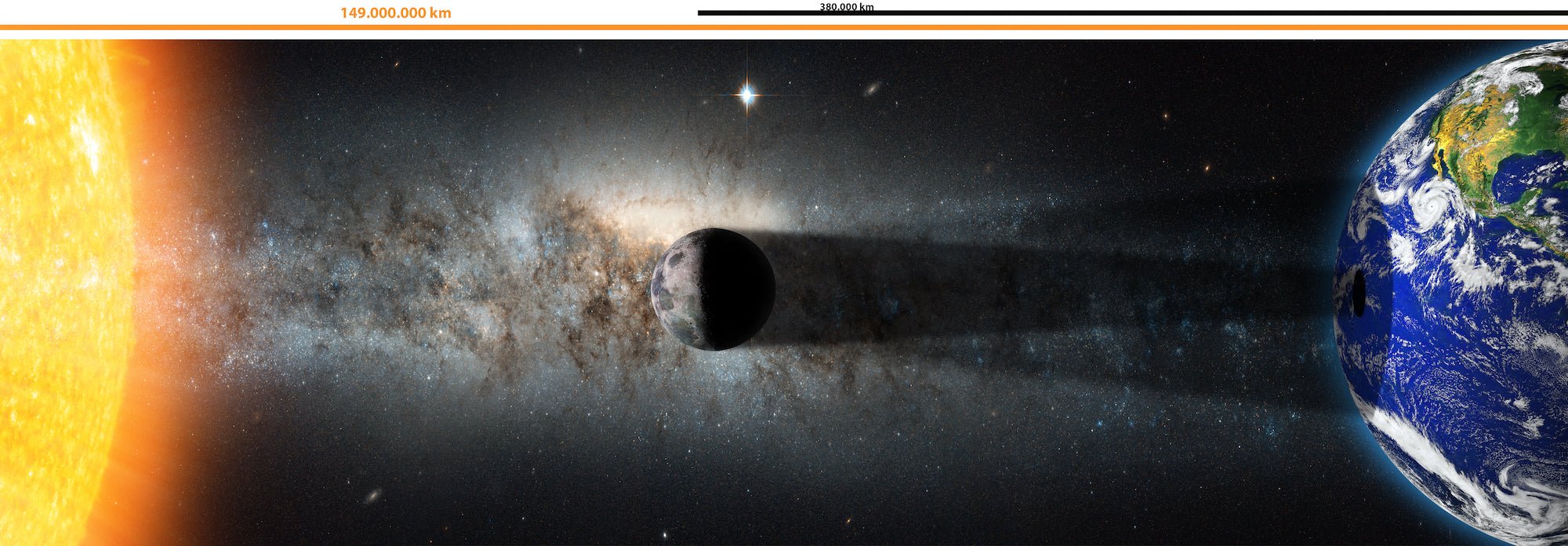Eclipses: Nature's Cosmic Drama
Solar Eclipses: When Day Turns into Night
A solar eclipse happens when the moon passes between the Earth and the sun, casting a shadow on our planet. It's like the moon photobombing the usual sunny picture! There are three main types of solar eclipses:
1. Total Solar Eclipse:
This is the blockbuster event. The moon completely covers the sun, turning day into night for a brief period. If you're in the path of totality (the area where the sun is entirely obscured), you'll witness a surreal experience. The sky darkens, stars might become visible, and there's a beautiful halo around the moon called the corona. It's the sun's outer atmosphere and is usually hidden by the sun's bright light.
2. Partial Solar Eclipse:
This is like a teaser trailer. The moon covers only a part of the sun. Depending on where you are and the specific alignment, it might look like a chunk of the sun has been bitten off.
3. Annular Solar Eclipse:
Think of this as the director's cut. The moon is too far away from the Earth in its orbit to cover the sun completely. This results in a ring of sunlight being visible, often referred to as the "ring of fire."
Lunar Eclipses: Earth's Shadow Play
Now, let's flip the script. A lunar eclipse occurs when the Earth comes between the sun and the moon, and our planet's shadow falls on the moon. Unlike solar eclipses, lunar eclipses are visible from anywhere on the nighttime side of the Earth. There are two main types:
1. Partial Lunar Eclipse:
It's like the opening act of a concert. Only a portion of the moon enters Earth's umbra (the central, darkest part of its shadow). A part of the moon will darken, but not all of it.
2. Total Lunar Eclipse:
The main event! The entire moon enters Earth's umbra. What's fascinating is that the moon doesn't go completely dark. Instead, it often turns a reddish color. Why? It's because of Earth's atmosphere! Sunlight passes through it, scattering shorter wavelengths (like blue and green) and allowing longer wavelengths (red and orange) to reach and illuminate the moon. This phenomenon is often called a "blood moon."
Why Don't We Have Eclipses Every Month?
You might wonder, since the moon orbits the Earth roughly every month, why don't we see eclipses more often? The answer lies in the moon's orbit. It's tilted about 5 degrees relative to Earth's orbit around the sun. So, most of the time, the moon is a little above or below the line between the Earth and the sun. Eclipses only occur when the moon's orbit intersects with that line, which is called the ecliptic.
Eclipses in Culture and Science
Throughout history, eclipses have been seen as omens or supernatural events. Different cultures had various interpretations, from dragons eating the sun to quarreling celestial beings. Today, we understand the science behind them, but they remain a source of wonder.
Eclipses also offer unique opportunities for scientists. For instance, during a total solar eclipse, researchers can study the sun's corona in detail. Similarly, lunar eclipses help in understanding the Earth's atmosphere and its effect on light.
Eclipses, whether solar or lunar, are a testament to the incredible ballet of celestial mechanics. They remind us of our place in the cosmos and the intricate dance of celestial bodies. So, the next time there's an eclipse, grab a seat (and maybe some protective glasses for a solar eclipse) and enjoy the show!
I hope that gives you a fun and informative overview of the science behind solar and lunar eclipses! If you have any more questions, feel free to ask.



Share:
The Mystical Significance of Solar Eclipses in Astrology
Environmental Effects of Solar Eclipses